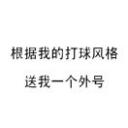Diamond in the rough?
时间:2022-08-04 06:40:49
To investors looking for a play on China’s luxury market, Chow Tai Fook might seem like a godsend. The name is alien to many Western ears but very familiar within China. The massive retail jewelry chain – whose revenue scale surpasses even Tiffany & Co –raised US$2 billion by listing 10.5% of its equity in December in the third-biggest IPO in Hong Kong this year.
With about 1,506 outlets across Greater China, the 80-year-old family company outstrips any competitor. It has opened an average of 179 stores annually for the past three years and plans to open 500 more during the next five, particularly in second- and third-tier cities. This scale gives Chow Tai Fook a whopping 12.6% of the jewelry market in the mainland and 20% in Hong Kong and Macau.
The company has the financial growth to match its physical expansion. In the last fiscal year (ending March 31), revenue jumped by 53% to US$4.5 billion, and profits were up 64%. In the current fiscal year, sales are expected to rise 71% to US$7.7 billion and profits to grow 80% to US$835 million.
This rosy outlook explains why the company has priced its shares somewhat high, at 15 times forward 2013 earnings. Compare that to its rivals: Luk Fook is 10 times forward earnings, Chow Sang Sang is 14, Tiffany & Co is 16.4 and Bulgari is 29. Even deciding to list in such a turbulent market is an indication of how highly the company values its own prospects.
Franchise of the future
Chow Tai Fook’s business is a model for other franchise operations in China. At the end of 2010, 25% of the company’s stores were franchised, 53% were directly owned, and 22% were in other cooperative structures. It is looking to boost its franchised businesses to 35% in the near future.
Unlike a royalty-based model, where parent companies get a slice of franchisee revenues, Chow Tai Fook allows local partners to use its name, then makes money by selling them its high-priced jewelry products. Of course, that tempts franchisees to cheat by purchasing materials more cheaply elsewhere and selling them at a premium under the Chow Tai Fook name, skimming the difference. So the firm’s inspectors regularly trawl mainland stores, checking products and matching sales with purchases from the parent company to catch cheaters.
Chow Tai Fook’s product portfolio is based heavily on gold, which it sources from Rio Tinto and De Beers. But gold is a low-margin product: Unlike other offerings at the store, prices are pegged to the market and non-negotiable. Executives at the company have therefore been pushing more aggressively into the diamond and gem business, which can offer higher margins and help diversify the company’s portfolio.
One apparent red flag is wide variations in store revenue: Around 94% of the company’s outlets are in mainland China, but these stores generate just 56% of its revenue. By contrast, its 50-odd outlets in Hong Kong are highly lucrative and make up most of the remaining 44% of revenues.
However, this isn’t particularly unique; many analysts estimate that Hong Kong retailers make 8-10 times more per square foot of retail space compared to the mainland. That’s because Hong Kong’s lower taxes bring down the overall price of retail goods by 20-40%. All the same, investors should note that changes to China’s import and value-added taxes could have a big impact on the company’s revenue, for better or worse.
Seeking beta
Chow Tai Fook’s value proposition is its overwhelming exposure to the China market – which is also its biggest liability. The prospectus lists a panoply of concerns luxury companies face in the market. Spotty intellectual property protection and weak rule of law are constant drags. As firms fight for prime locations and scarce talent, rising real estate and labor costs are also eating into revenue.
Most importantly, so many eggs in the China basket leaves Chow Tai Fook uniquely exposed to the ups and downs of China’s economy. Luxury goods stocks are “high-beta,” meaning that they crash when the market slows and jump when it rises. All the headline-grabbing features of the Chinese economy directly impact the company’s bottom line: consumption growth, inflation (retail gold is a common hedge), even an appreciating currency(which makes foreign precious gems more affordable).
Chow Tai Fook is a good play for investors looking to gain better exposure to the Chinese economy more broadly. And of course, investors looking to short the China growth story – who have previously been forced to rely on imperfect proxies like copper or the Australian dollar – now have a juicy new target.
